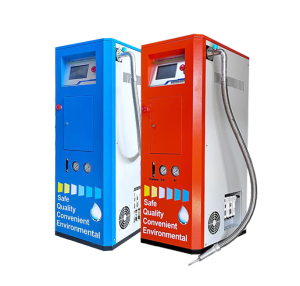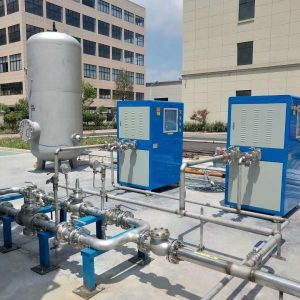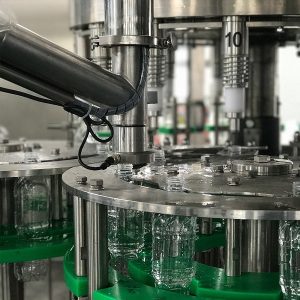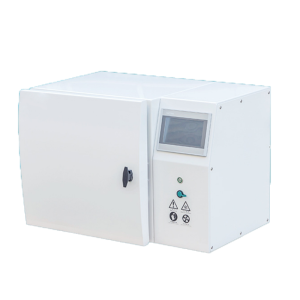Cryogenic storage tanks with thermal insulation are divided into vacuum powder insulated and atmospheric pressure powder insulated types. Powder insulation uses materials with low thermal conductivity, such as powders, fibers, or foams, to reduce heat transfer. There are two methods:
- Atmospheric Pressure Powder Insulation: Uses regular powder insulation under atmospheric pressure, with a thick insulation layer. Dry nitrogen is added to maintain positive pressure, preventing moisture ingress and condensation. This method is suitable for temperatures above liquid nitrogen.
- Vacuum Powder Insulation: The space filled with powder is vacuumed, reducing gas heat transfer. The powder particles also reduce radiative heat transfer, providing excellent insulation.
Vacuum Powder Cryogenic Storage Tanks:
•Structure: Double-layer cylindrical design with the inner tank and piping made of austenitic stainless steel, and the outer shell made of carbon steel.
•Insulation: The interlayer is filled with expanded perlite (also known as pearlite) and contains specially treated adsorbents, achieving a high vacuum (0.5–6 Pa).
•Capacity: Up to 200m³.
•Pressure: High working pressure (e.g., 2.0 MPa for some tanks).
•Usage: Can be fixed or transportable. Fixed tanks are used for storing cryogenic liquids at production sites, usage points, or supply stations. Transportable tanks move cryogenic liquids from production sites or supply stations to usage points, using land or water transport (tank trucks, trailers, or tank ships).
Atmospheric Pressure Powder Cryogenic Storage Tanks:
•Structure: Flat-bottom double-layer design with the inner tank made of stainless steel and the outer shell made of carbon steel. The inner tank holds the medium, and the interlayer forms an insulated space.
•Insulation: Foam glass bricks insulate the bottom, and pearlite insulates the interlayer. The outer shell has a rotating ladder, and the tank top has an operation platform and safety railings.
•Capacity: Above 200m³.
•Pressure: Low working pressure (34–40 KPa).
•Usage: Filled using liquid pumps or liquid level differences. Can also be used for oxygen peak shaving, supplying gas when the oxygen generator is temporarily shut down or when oxygen pressure is low, by pumping and vaporizing the liquid into the pipeline network.rowth across industries.es.
 WOBO Industrial Group Cryochains
WOBO Industrial Group Cryochains







